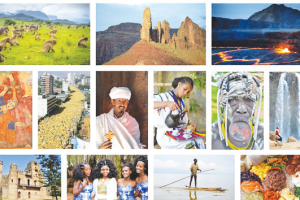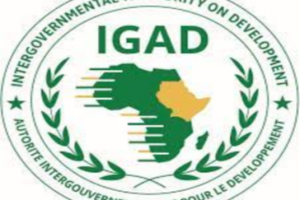
Liqo is practiced setting domestic animals especially heads of cattle as a salient parameter. In the nationality, when someone wants to be recognized by liqo, he should come up with a great number of animals. Quantity is not enough to be a winner of Liqo. Rather, the quality of animals needs to be ensured. To reach liqo, the farmer should hybridize 100 calves in a short period of time. This is referred to ‘‘ussay xeetin liqo gelis’’.
To reach the liqo level, male calf, ox and equines will not be counted. However, when the person becomes a winner of the liqo culture, he will get his honorary title from his mule or horse known as ‘‘Mollo goda saumingoda.’’ In liqo all calves would not be counted. According to the Gofa culture, hornless calves are referred to Bulkke. Calves which have horns that grown up in different directions are known as Dafana’ They are precluded from liqo.
Therefore, horn size and structure are decisive parameters to vie for liqo. For instance, they get the name ‘dumasso’ when their horns have grown upwards equally. ‘Dunkuro’ when both horns have grown downwards, ‘Afira dumasso’ when both horns grew upwards and appear connected to each other at the tips, ‘Kombe’ (large and circular horn) and ‘Puyxxa’ (short and thin) are preferable for liqo.
A person who reared 100 heads of cattle should undergo a peculiar cultural practice to acquire the title of liqo. As he has many cattle, he needs to slaughter two oxen to feed the community as gesture of displaying wealth. After the feast, the contestant should wait until the community judges and verify his wealth using cultural mechanisms.
Among the basic criteria which help the person to be accepted or rejected is testing him whether he/she reared the calves not at the cost of others’ time, money and energy. To claim liqo, he/she should produce them by his/her effort and industriousness.
This would not be confirmed by the person’s affirmation only. Rather to confirm the contestant’s eligibility, the person should sleep in a hole on the ground dug according to his height. He and other pray for him. Then, pails of milk will be spilled over him. His family, friends and the community pray for him. The praying ceremony is called Xooso maadda.
Then if the person floats, it will be confirmed that he had acquired his fortune by the sweat of his brow. Then the title of liqo will be conferred on him. The local community will sing songs appreciative of him and initiate others to follow his footsteps. However, if he sinks, a conclusion will be made that there is something underhand in producing the wealth and he will not get liqo.
After the developmental model, who reared 100 calves acquired the liqo title; he will be taken as role model in the community. Among those development models, who were entitled such prestigious address makers are found Ayelo, Oda, Golo kuno, Wacho charga, Baso arasa, Daydo tuma and Etero urgo. These development models have huge respect and acceptance in Gofo culture and history. Youths would be expected to prove successful emulating successful elders as best inspirational success story.
To sum up, liqo culture has pivotal role in producing developmental models and initiating others to follow their footsteps. This social asset of the Gofa people should be promoted and preserved so as to be transferred to the coming generation. Beyond seeing to its furtherance in animal husbandry, attempts should be made to get it integrated in other economic and social sectors.
The Ethiopian Herald Sunday Edition September 22/2019
BY TSEGAY HAGOS





